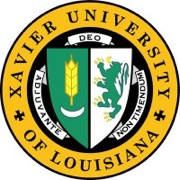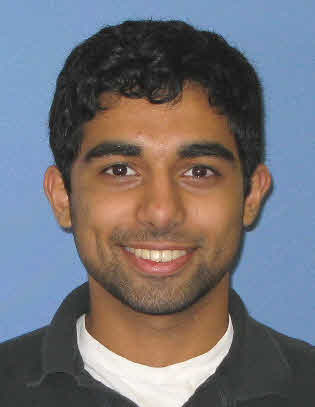Below is a summary of the abstract you submitted. Presenting author(s) is shown in bold.
If any changes need to be made, you can modify the abstract or change the authors.
You can also download a .docx version of this abstract.
If there are any problems, please email Dan at dar78@pitt.edu and he'll take care of them!
This abstract was last modified on April 21, 2015 at 10:48 a.m..

During the past year, students in the SEA-PHAGES program in the Department of Biology, Xavier University of Louisiana have isolated a collection of 12 mycobacteriophages capable of growth on Mycobacterium smegmatis mc<sup>2</sup>155 (ATCC 700084) as a host.
Phages were isolated from a variety of locales in and around the Greater New Orleans, Louisiana area using standard microbiological techniques. When allowed to form plaques in a soft-agar overlay culture with M. smegmatis mc<sup>2</sup>155 as host, phages displayed a variety of plaque sizes and morphologies. Titers of high titer lysates varied from roughly 10<sup>8</sup> to 10<sup>14</sup> plaque-forming units per milliliter. One phage, Specks, was selected for sequencing based in part on the purity and quantity of its DNA. The Specks genome is somewhat more than 156,000bp in length, with circularly permuted ends. BLASTn analysis reveals considerable nucleotide homology with the genomes of other known mycobacteriophages, including Catera, Teardrop (a Xavier phage from last year), TinyTim, Lysocool, Astraea and Zygotaiga. These homologies support assignment of Specks to the C cluster and specifically the C1 subcluster. BLASTn data along with genome size and structure also support its assignment to the family Myoviridae. Similarly, BLASTp analysis reveals a number of amino acid sequence homologies and putative functions that support this assignment and in general comport well with the maps of well-characterized phages. DNA Master autoannotation employing Glimmer and GeneMark calls about 240 protein-encoding genes. Analysis with Aragorn via the World Wide Web, external to the DNAMaster environment, calls 34 tRNA-encoding genes. Most of these tRNA calls are located in a single cluster not far from the center of the genome, from about 94,700bp to about 102,200bp as measured from the left-hand end. Included are calls for genes encoding two noncanonical tRNAs, one for selenocysteine and one for pyrrolysine. External Aragorn also calls a tmRNA gene. All these calls are uncertain, however, as they are not corroborated by corresponding calls in tRNAscan-SE. tRNAscan-SE calls neither the tmRNA nor the selenocysteinyl-tRNA; and calls the pyrrolysyl tRNA as a suppressor tRNA.

